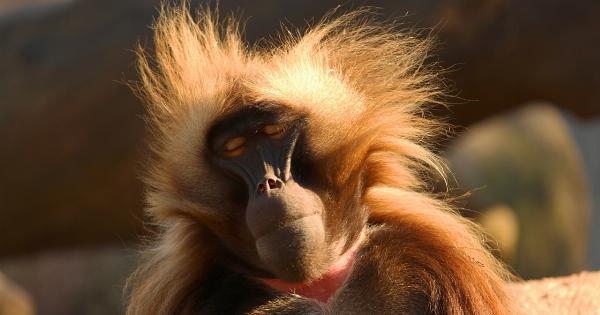The human brain is one of the most complex structures in nature. It has been developed through millions of years of evolution, which have led to the development of various regions and structures that play crucial roles in our cognitive functions.
What is the Cerebellum?
The cerebellum is a structure at the back of the brain that is responsible for coordinating voluntary movements, maintaining balance, and controlling posture.
It is located under the cerebral cortex and is smaller in size than the cerebral cortex, but it contains more than half of the neurons present in the entire brain.
In primates, the cerebellum has evolved to become much larger and more complex than it is in other mammals.
This expansion is thought to be related to the development of the cognitive abilities that are unique to primates, such as problem-solving, reasoning, and social intelligence.
The Evolution of the Cerebellum in Primates
The cerebellum has evolved in primates over millions of years, as they adapted to new environments and developed new cognitive abilities. One of the key adaptations that occurred was the expansion of the cerebellum itself.
In non-primate mammals, the cerebellum is relatively small and simple. However, in primates, the cerebellum has become much larger and more complex.
This expansion has been linked to the development of the cognitive abilities that distinguish primates from other animals.
The Role of the Cerebellum in Human Cognition
The cerebellum is an important part of human cognition. It plays a crucial role in many different cognitive processes, including motor control, cognitive flexibility, and attention.
For example, the cerebellum is involved in the planning, initiation, and execution of movements. It receives information from various sensory systems, including the eyes and ears, as well as from the cerebral cortex.
This information is used to coordinate movements and to maintain balance and posture.
The Cerebellum and Cognitive Flexibility
In addition to its role in motor control, the cerebellum is also involved in cognitive flexibility. Cognitive flexibility refers to the ability to shift attention and adapt to changing situations.
Studies have shown that the cerebellum is involved in this process. For example, researchers have found that patients with cerebellar damage have difficulty with tasks that require cognitive flexibility, such as the Wisconsin Card Sorting Test.
This test requires participants to match cards based on different rules, which change over time.
The Cerebellum and Social Intelligence
The cerebellum may also play a role in social intelligence. Social intelligence refers to the ability to understand and interact with other people.
Studies have found that the cerebellum is activated when people are presented with social cues, such as faces or voices.
Additionally, researchers have found that the cerebellum is involved in tasks that require social cognition, such as the recognition of emotions in facial expressions.
The Cerebellum and Language
The cerebellum is also involved in language processing. This has been demonstrated in studies in which patients with cerebellar damage have difficulty with language tasks, such as word generation and verbal fluency.
The role of the cerebellum in language processing is still not well-understood, but it is thought to be related to the coordination of articulatory movements and the maintenance of language rules and grammar.
The Cerebellum and Evolutionary Adaptation
The cerebellum has evolved over millions of years in primates. This evolution has been driven by the need to adapt to new environments and to develop new cognitive abilities.
The expansion and specialization of the cerebellum in primates has been linked to the development of cognitive abilities that are unique to this group of animals.
These abilities include problem-solving, reasoning, and social intelligence, all of which are crucial for survival and adaptation.
The Future of Cerebellar Research
The cerebellum is an important part of the human brain that has evolved over millions of years to play a crucial role in our cognitive abilities.
As our understanding of the cerebellum continues to grow, it is likely that we will find new and exciting ways to improve our cognitive function.
By exploring the role of the cerebellum in various cognitive processes, we can gain a better understanding of the evolution of the brain and the development of human cognition.
Conclusion
The cerebellum is a fascinating structure that has evolved over millions of years to play a crucial role in our cognitive abilities.
Its expansion and specialization in primates have been linked to the development of cognitive abilities that are unique to this group of animals, including problem-solving, reasoning, and social intelligence.
As our understanding of the cerebellum continues to grow, there is no doubt that we will discover even more fascinating things about this important part of the brain.





























